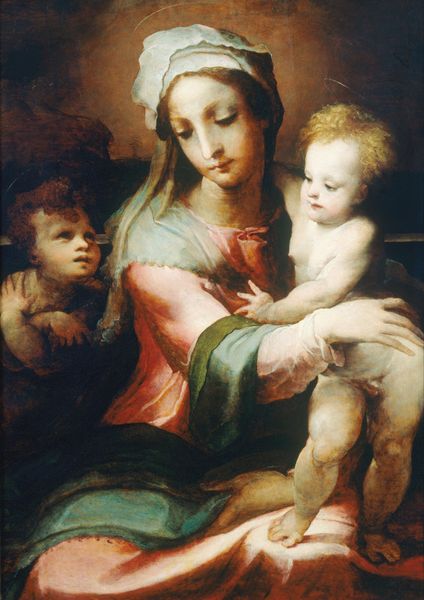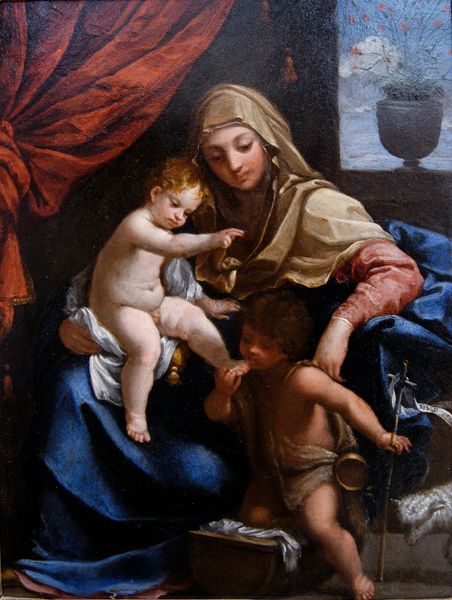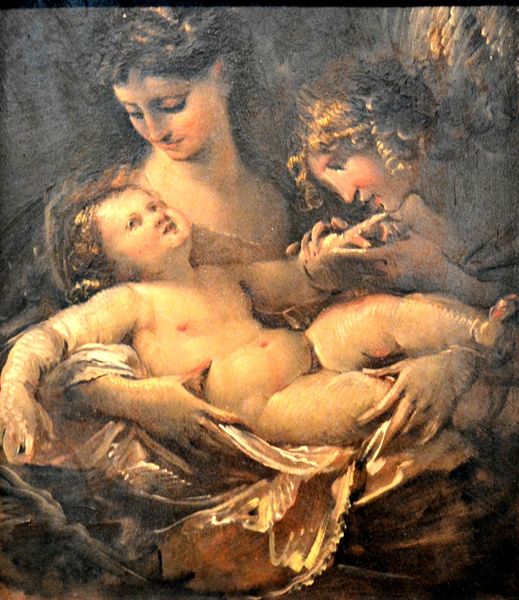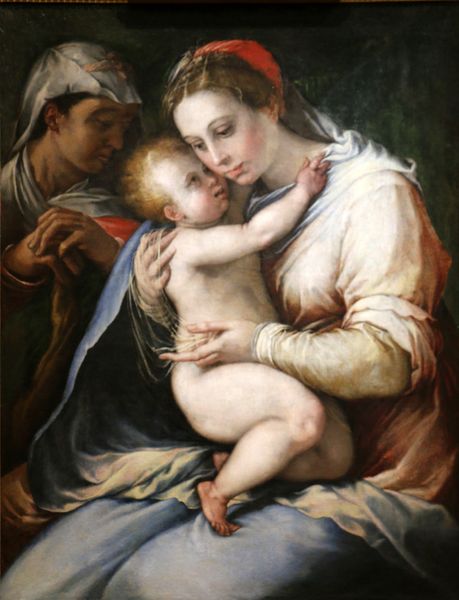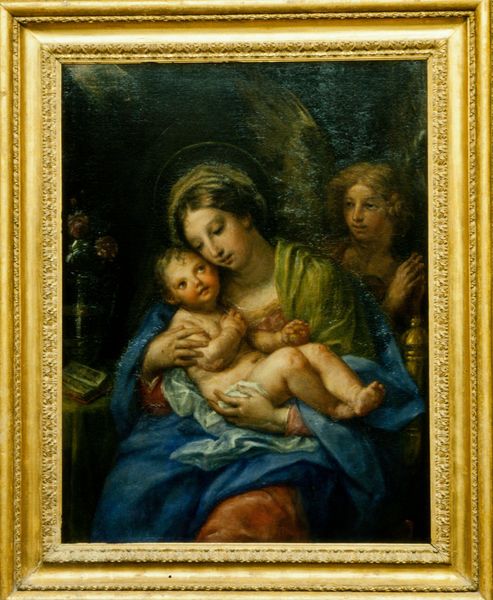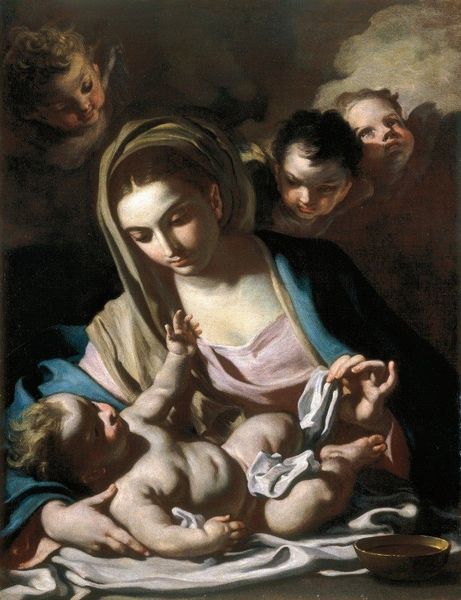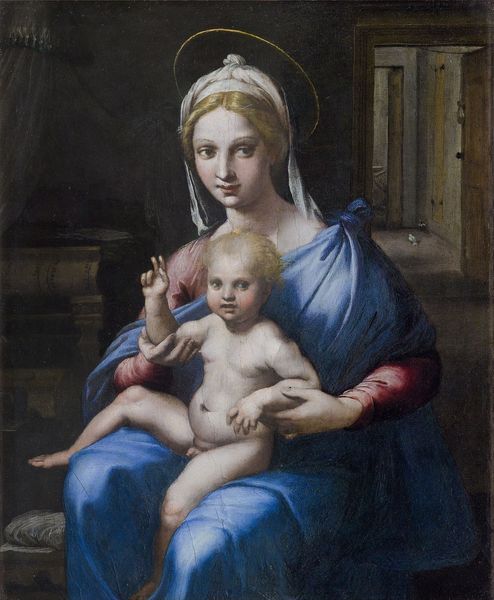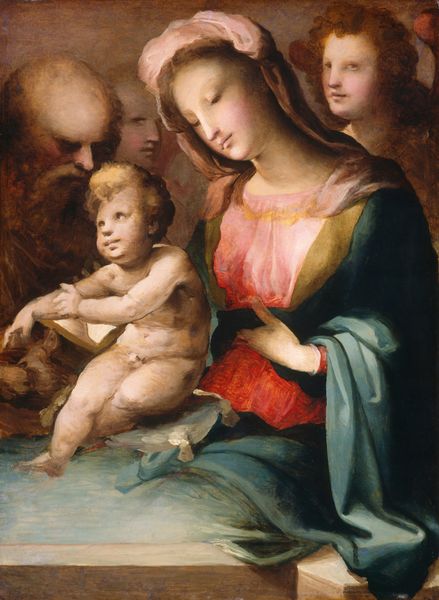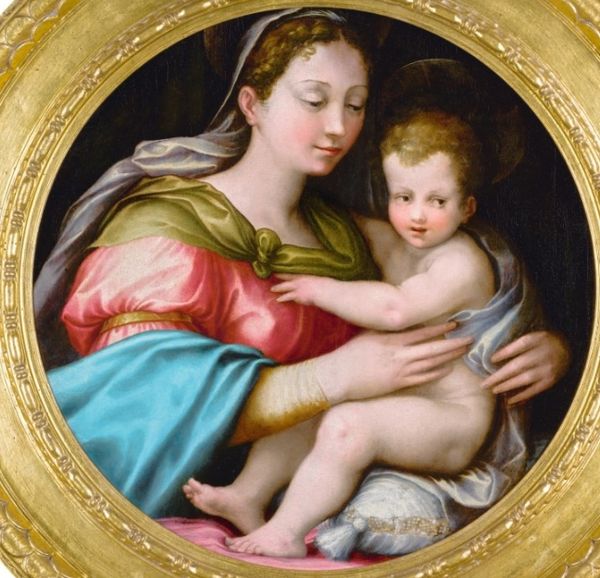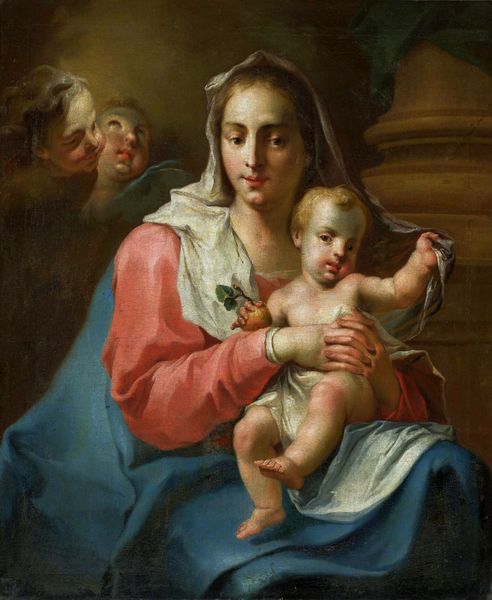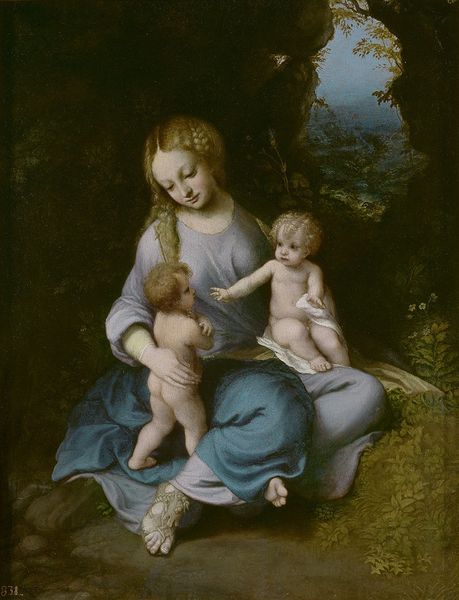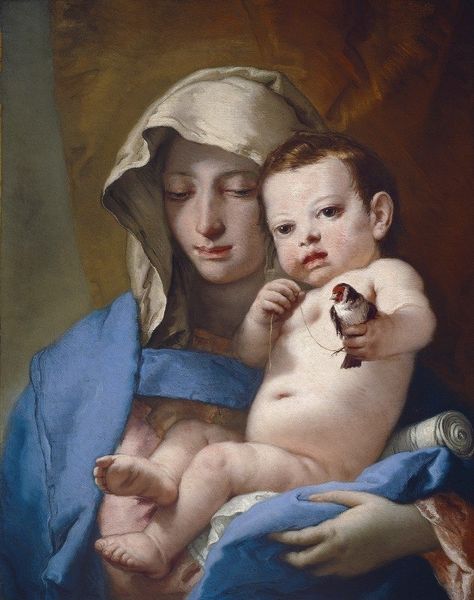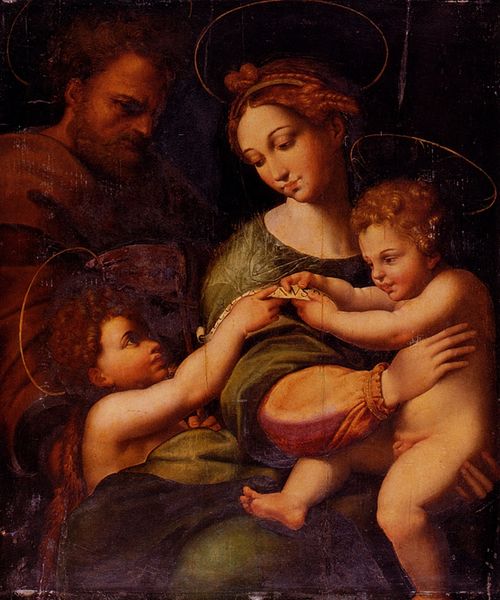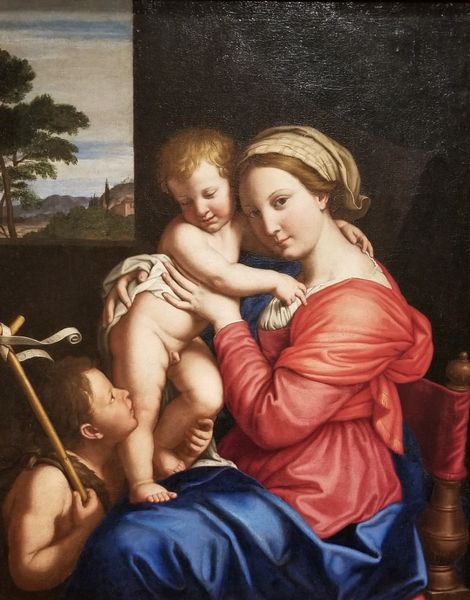
painting, oil-paint
#
portrait
#
baroque
#
painting
#
oil-paint
#
oil painting
#
christianity
#
mythology
#
painting painterly
#
genre-painting
#
history-painting
#
christ
Copyright: Public domain
Curator: Look at this, "The Virgin and Child with Saint John the Baptist," a canvas rendered around 1635 by Eustache Le Sueur, a work presently residing in the Louvre. It immediately struck me with its gentle serenity. Editor: It’s remarkable how contained the drama is. It feels intimate, almost like we've stumbled upon a private moment rather than witnessing a grand religious tableau meant for public consumption. Curator: Precisely! Le Sueur channels Baroque idealism through a lens of classical restraint. Notice how the figures are arranged in a pyramidal composition, stabilizing the whole scene while emphasizing Mary as a maternal pillar. Her eyes downcast; this communicates both humility and a weighty knowledge of what's to come. The iconography of Saint John, present in his simple clothing and cross, hints at the passion and future martyrdom. Editor: I’m curious about the implications of presenting these two children together. Placing Christ alongside Saint John…what narratives are interwoven? The precursor, already adoring the Savior. It's carefully choreographed. Curator: A visual foreshadowing. John’s gaze fixes on the Christ Child. Even their relative scale indicates future importance – despite being approximately the same age here, Christ will supersede him. But what's remarkable is Le Sueur doesn't rely on grand gestures or dramatic light. The symbols resonate quietly. It communicates not only theology, but a tenderness of the human relationships, love, and fate. The emotional tension almost vibrates just beneath the surface. Editor: Considering its historical context, right on the cusp of significant social upheaval and shifting political paradigms, do you find its calm centeredness reactionary or progressive for the 17th Century, or a deliberate evasion from turbulent social climates? Curator: A fascinating point. While overt depictions of aristocratic life dominated many canvases of this period, Le Sueur redirects us towards domestic sanctity. Perhaps, amid growing uncertainty, art sought refuge in images reflecting the timeless ideals of family and faith, even when imbued with underlying religious symbolism. Editor: Indeed. In such turbulent times, viewers might find comfort not in displays of power but in subtle promises of stability, echoed in the delicate gestures of faith between these iconic figures. Curator: Ultimately, I believe Le Sueur achieves something enduring. It’s not just a painting; it is a quiet meditation on destiny, humanity, and the unwavering bond of maternal love. Editor: It leaves you considering the eternal power of family, faith, and the symbols we use to communicate deep emotional truths, especially as humanity and cultures evolved since Le Sueur.
Comments
No comments
Be the first to comment and join the conversation on the ultimate creative platform.
